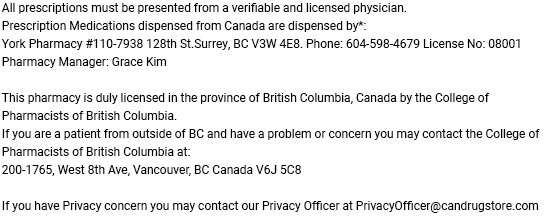Description
Indications
Dapagliflozin is utilized as part of a comprehensive treatment plan, which includes a balanced diet and exercise, to manage type 2 diabetes. It functions by preventing the absorption of glucose in the kidneys, ultimately lowering the blood sugar level. It is not effective for individuals with insulin-dependent or type 1 diabetes, as they must use insulin injections.
Dapagliflozin is prescribed to reduce the risk of hospitalization due to heart failure in patients with type 2 diabetes, cardiovascular disease, or multiple cardiovascular risk factors. The medication is also used to decrease the likelihood of cardiovascular death and hospitalization in patients with reduced ejection fraction (a condition characterized by a weak heart that is unable to effectively pump blood throughout the body) and heart failure.
For patients with chronic kidney disease, dapagliflozin can lower the risk of further kidney damage, end stage kidney disease, and hospitalization for heart failure.
Uses and Dosage
Take this medication orally, with or without food, as instructed by your physician. The recommended frequency is typically once a day in the morning. The dosage is adjusted according to your medical condition and response to treatment.
Take this medication consistently to receive optimal benefits. To ensure consistent consumption, take it at the same time each day.
If you notice a lack of improvement or worsening of your condition, please inform your physician immediately.
Side Effects
Some side effects may occur that usually do not need medical attention:
- muscle aches
- sore throat
- stuffy or runny nose
- back pain
- difficulty having a bowel movement
- pain in the arms or legs
Inform your healthcare provider immediately if you experience any serious side effects:
- anxiety
- bladder pain
- bloody or cloudy urine
- blurred vision
- chills
- cold sweats
- confusion
- cool, pale skin
- decreased frequency or amount of urine
- depression
- difficult, burning, or painful urination
- dizziness
- fast heartbeat
- frequent urge to urinate
- headache
- increased hunger
- increased thirst
- itching of the vagina or genitals
- loss of appetite
- loss of consciousness
- lower back or side pain
- nausea
- nightmares
- seizures
- shakiness
- slurred speech
- swelling of the face, fingers, or lower legs
- thick, white vaginal discharge with mild or no odor
- trouble breathing
- unusual tiredness or weakness
- vomiting
- weight gain
Caution
Prior to taking dapagliflozin, inform your doctor or pharmacist of any allergies you may have, including allergies to this medication or any other substances.
Provide your doctor or pharmacist with a complete medical history, particularly in regards to: kidney disease or failure requiring dialysis, dehydration, alcohol use or abuse, low blood pressure, and a history of yeast infections in the vagina or penis.
If you have diabetes, it is possible to experience blurred vision, dizziness, or drowsiness as a result of low or high blood sugar levels. For safety reasons, avoid driving, operating machinery, or engaging in activities that require alertness until you are confident in your ability to do so. Limit your consumption of alcohol while taking this medication, as it may increase your risk of developing low blood sugar and high ketone levels.
In the event of stress to the body, such as due to fever, infection, injury, or surgery, it may become more difficult to control blood sugar levels if you have diabetes. If you are unable to eat or eating less due to illness or other conditions, this may result in high ketone levels while taking this medication. Consult your doctor in these instances, as a change in treatment plan, medication, or blood sugar and ketone testing may be necessary.
Pregnancy may cause or worsen diabetes, discuss a management plan with your doctor. Your diabetes treatment, including diet and medications such as insulin, may be modified during pregnancy.
Form and Strength
Farxiga is available in the following forms and strengths:
-
Farxiga tablet:
- 5mg
- 10mg
-
dapagliflozin tablet:
- 5mg
- 10mg
FAQ
How long does it take to adjust to Farxiga?
Farxiga starts working when you take your first dose. But it might take a few weeks for your blood sugar level to improve. It’s not known how long it takes for Farxiga to help lower the risk of complications from heart failure or kidney disease.
Does Farxiga make you go to the bathroom?
Yes, Farxiga can make you pee a lot, as it eliminates blood sugars and water content from your body through the kidneys. Farxiga often causes dehydration as a side effect. Due to the direct effect of Farxiga on your kidneys, you may experience frequent urination.
Resources
- https://www.healthline.com/health/drugs/farxiga#dosage
- https://www.mayoclinic.org/drugs-supplements/dapagliflozin-oral-route/side-effects/drg-20095101?p=1
- https://www.medicalnewstoday.com/articles/326257#side-effects
- https://www.drugs.com/farxiga.html#warnings
- https://www.webmd.com/drugs/2/drug-165641/farxiga-oral/details


 Prescription Required
Prescription Required  Formulation :
Formulation : 




